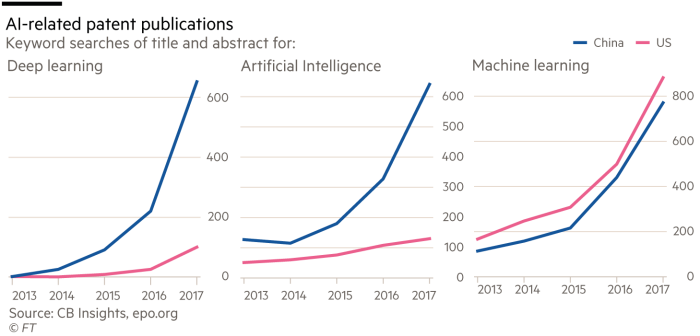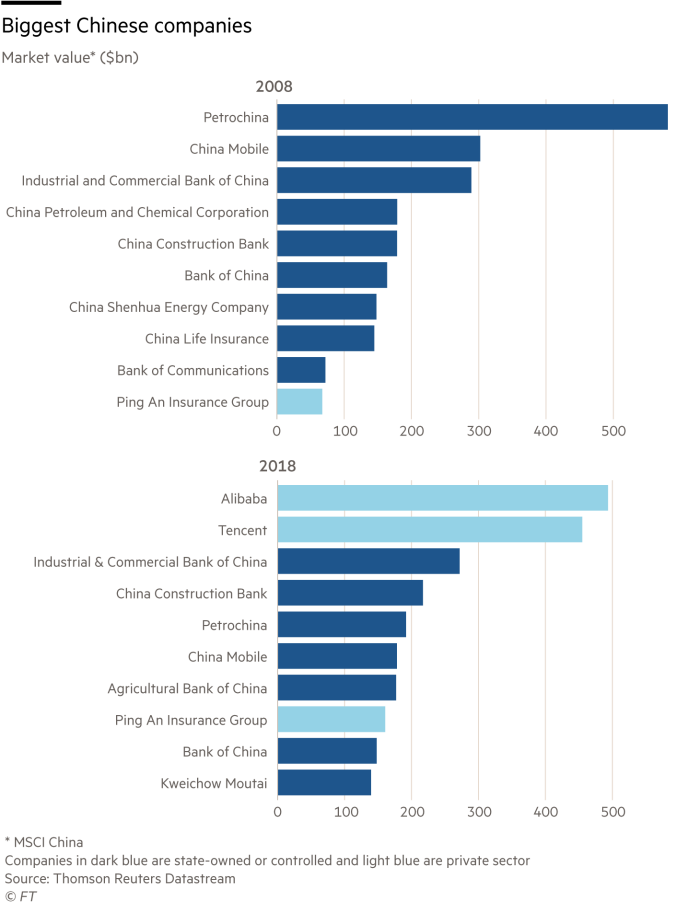
Hic Sunt Dracones
The Space Race started with an early lead by the Soviet Union, which managed to reach a stable orbit with the first ever artificial satellite, the Sputnik 1. This impressive achievement started the so-called “Sputnik Crisis” in the United States, as the West feared that the USSR had surpassed it in space-related technologies, which had obvious repercussions on the ongoing ICBM stalemate between NATO and the Warsaw Pact.
Although the days of a bipolar global chessboard are long gone, the West may soon face another “Sputnik moment”, this time from another opponent: the People’s Republic of China.

Despite being ridiculed as a copycat country, China is starting to become an innovator in a number of fringe technologies, often in areas neglected by the West. This is nothing new: the same happened to Japan, which was considered to only be capable of a copycat-focused industry in the 60s-90s [1], and is now one of the most innovative and technologically advanced nations.
However, unlike Japan, the PRC remains under an unchallenged, one-party rulership. Why is this significant?
For the first time in history, surveillance technology and AIs will allow authoritarian regimes to effectively monitor the entirety of their population, and the Communist Party of China is sitting on a technological goldmine: the 1,403,500,365 persons [2] (of which more than half are internet users [3]) under its control.
Currently, in machine learning development we face 3 main bottlenecks: computational power (which will become more available as we develop more specialized computer chips), algorithm technology (which will take time and research to expand, and datasets (or better said labeled datasets, more useful in machine learning than raw data). The last point highlights one of the biggest advantages of China over its competitors in this field: the enormous availability of data that the Party can mine from its citizens.
“In this field of AI, data is, for example, one of the key things,” said Matt Scott (Founder of Malong Technologies, Shenzhen). “[In China,] you can get data quicker, [you can get] more people, more organizations and more businesses.” [4]
Ethical concerns like customer protection, data privacy, and mass surveillance are less of a problem in the PRC than in the US or the EU. Furthermore, the approach China and the Chinese population has with new technologies is quite different from our perception of technological development here in the West, and decidedly risk-taker. At the risk of becoming philosophical, I think this arises from the different approach to humanistic and scientific knowledge in the two different cultures. The Chinese approach to many different problems seems to proceed under the banner of pragmatism: after all, how could a society with such a complex interaction between capitalism and communism work?
We have a clear example of this: in 2014, Microsoft launched an advanced machine learning chatbot, Xiaoice, aimed to the Chinese market. The project was very popular, being ranked as the top influencer on Weibo, a Chinese social media similar to Twitter [5]. To draw a comparison, Xiaoice‘s “sister”, an AI called Tay released for the American market, was removed from Twitter after only 16 hours after a group of users exploited its deep learning algorithm to make it post racist and sexually-charged tweets [6]. To be fair, even in China chatbots are in danger of being removed, although for different issues: another chatbot by Microsoft, named Xiaobing, was removed after answering to certain questions with “unpatriotic remarks” [7]

Despite a shift in the ownership model of the biggest Chinese companies (with the two biggest Chinese companies per market value being privately owned), the Party still maintains its control over the country’s economy with an iron fist:
“To be affiliated with the Communist party is good for our brand as well because people are more confident we are a company that will do well,” said Xu Zewei, the founder of 91 Finance, a fintech platform. “When recruiting, we specifically seek out party members because we know they are the most promising.” [8]
It is clear that the PRC is aiming to become the world’s technological leader, using this dominance in both a socioeconomic and a military context:
“We will devote more energy and take more concrete measures in deepening reform in all areas, […] developing a modernized economy to increase China’s economic and technological strength, and composite national strength, so as to better demonstrate the vitality of the socialist market economy. […] We will stick to the absolute leadership of the CPC (Communist Party of China — Ed.) over the people’s armed forces and fully implement the Party’s thinking on strengthening the military for the new era. We will continue to enhance the political loyalty of the armed forces, strengthen them through reform and technology, and run them in accordance with law. […] We should be good reformers and pioneers. We should be enterprising, work creatively in light of actual conditions, and adeptly apply information technology, including the internet, in our work.” (from a speech by Xi Jinping, General Secretary of the Communist Party of China) [9][10]
Under the ever-watchful eye of the Party, Beijing and Shenzhen are becoming hotspots for AI startups and deep learning innovators, attracting minds and funds from all over the world (how Mr. Eschenbach from Sequoia Venture Capital [11] explained us during our first lesson). China seems clearly set to become the leader in the technologies the Party considers strategic for maintaining the status quo and asserting China as a new global superpower: AI-driven mass surveillance and facial recognition [12], cyber warfare and corporate espionage [13], quantum decryption [14].
Sources:
[1]: archive.fortune.com/magazines/fortune/fortune_archive/1993/05/17/77879/index.htm
[2]: esa.un.org/unpd/wpp/DataQuery/
[3]: economictimes.indiatimes.com/news/international/world-news/chinas-online-population-climbs-to-772-million/articleshow/62726168.cms
[4]: www.nationmultimedia.com/detail/Startup_and_IT/30322150
[5]: blogs.bing.com/search/2014/09/05/meet-xiaoice-cortanas-little-sister/
[6]: www.bbc.com/news/technology-35890188
[7]: www.scmp.com/week-asia/politics/article/2105338/my-china-dream-moving-united-states-chinese-chatbots-censored
[8]: www.scio.gov.cn/32618/Document/1565512/1565512.htm
[9]: www.chinadailyhk.com/articles/184/187/127/1521628772832.html
[10]: www.xinhuanet.com/english/download/Xi_Jinping’s_report_at_19th_CPC_National_Congress.pdf
[11]: www.sequoiacap.com/people/carl-eschenbach/
[12]: www.cnn.com/2018/05/23/asia/china-artificial-intelligence-criminals-intl/index.html
[13]: nationalinterest.org/blog/the-buzz/china-massively-expanding-its-cyber-capabilities-22577
[14]: www.scientificamerican.com/article/chinese-researchers-achieve-stunning-quantum-entanglement-record/
2 comments on “Hic Sunt Dracones”
Comments are closed.



Well stated. The power of AI, machine learning, and related technologies are very powerful, and of course, with that power comes the potential for abuse by authoritarian regimes. The fact that China has a large R&D budget, innovation, and a one-party state presents a perfect storm for this kind of misuse.
I would contend that these fears about misusing these technologies may be somewhat closer to home that we think, certainly closer than China. At least in the U.S., the government has caught performing illegal spying on its citizens on multiple occasions-see the NSA spy scandal that Edward Snowden revealed and the PATRIOT Act. It is not too far-fetched to consider that our own “non-authoritarian” governments may be working on the same technology as the Chinese researchers with similar aims in mind.
Users who have LIKED this comment:
Nice point, surveillance in Western countries is an hot topic as well, especially because so far public opinion backlashes on privacy infractions have been short-lived; although I think there are different approaches even in Western countries, look for example at the difference between policies in the EU and in the US+UK